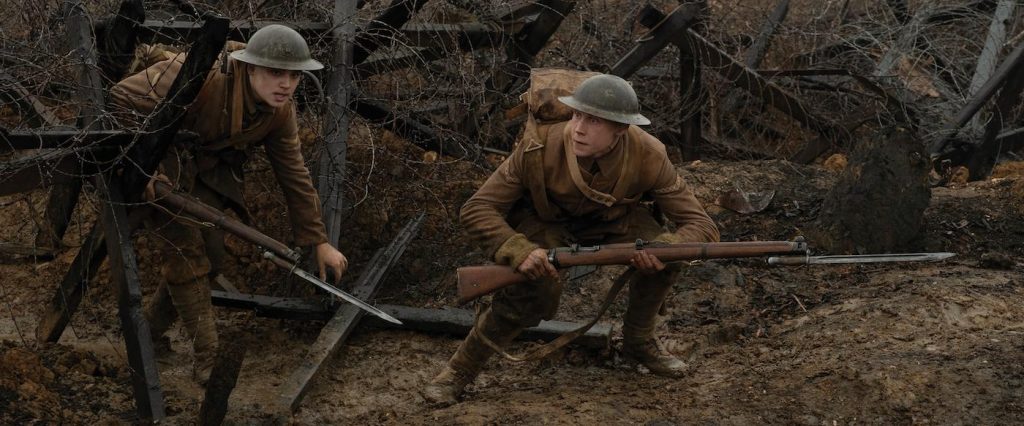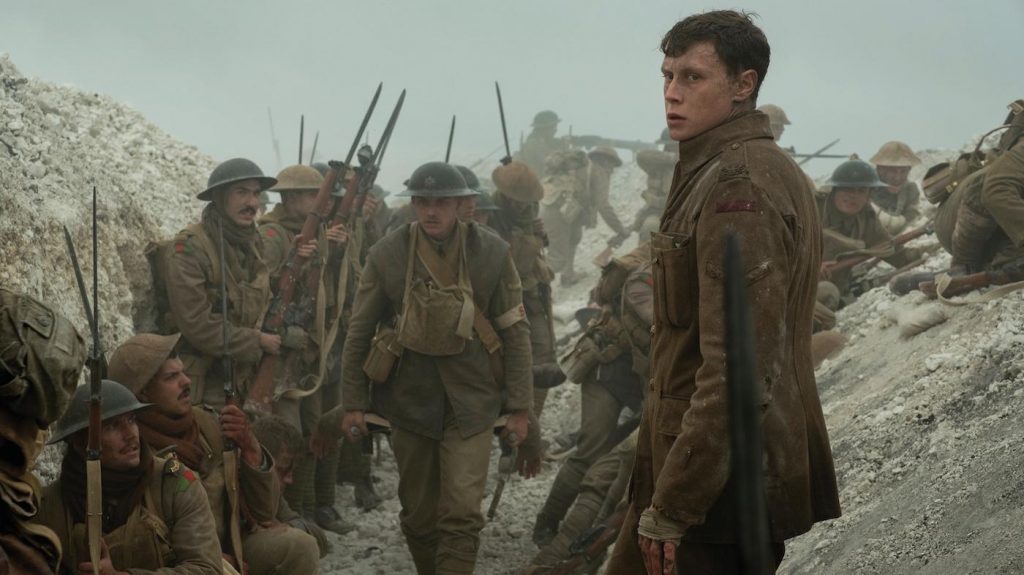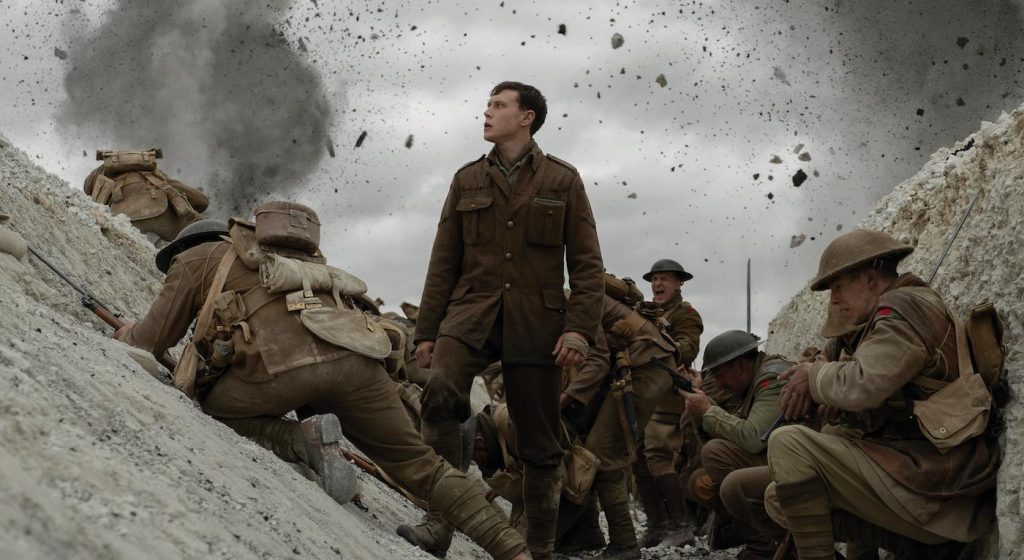1917′s Production Designer on Building a World at War
How good is director Sam Mendes’ World War I epic 1917? Let’s begin with a brief anecdote about one of his collaborators—the legendary cinematographer Roger Deakins, who originally wasn’t sure it was even possible to pull off what Mendes was after. That was to film 1917 as if it was all a single, continuous shot. But once Deakins read Mendes and screenwriter Krsty Wilson-Cairns script, he knew the director’s ambition for 1917 was rooted in story.
The film follows two young soldiers, Lance Corporals Schofield (George Mackay) and Blake (Dean-Charles Chapman) on an insanely dangerous but crucial mission to get a message across enemy lines to fellow soldiers walking into a death trap. The action begins more or less from the opening moments of the film to the last, with Deakins’ camera relentlessly tracking Schofield and Blake’s tortuous progress across the battlefields of the Great War.

Another of Mendes’ key collaborators was production designer Dennis Glassner. Considering the film would constantly be on the move, Glassner was tasked with not only recreating the ravages of World War I, but building environments that could physically contain and aid the movement of the camera.
“Part of the idea came from when Sam and I did Spectre, the opening Day of the Dead sequence,” Glassner says of the last Bond film. “We said, Let’s try and do this as a continuous shot. We were in Mexico City, and the Mexicans were incredibly accommodating because we did so much to achieve this. We learned a lot about the continuous shot idea and we applied that knowledge to how we were going to approach this. Tireless planning, every day, until we got it right.”
One early scene, for instance, takes place in an underground German bunker. Without giving this riveting scene’s climactic conclusion away, the camera moves throughout the cramped space following both our soldiers and a scurrying rat. How was Glassner able to build this immersive environment that was (or seemed) underground, contained enough space for the camera to snake around the characters, capture a rat scampering across the floor, and then function as a potential tomb for our forlorn heroes?
“You do it in a model form and drawings, then start to deconstruct it,” Glassner says of building these brutal and brutalized environments. “Then we realized it as a concept drawing, then when Roger and I like them, we show them to Sam and he reflects on it. We go back and forth like this, looking for an answer. There’s no ego in any of us, the movie’s the ego, it tells us what we want to know.”
Glassner says that a Mendes film can function without ego because everyone working on it is at the top of their game.
“Luckily we had, in my opinion, the best people in the world working on this, and Sam handpicks everybody. Sam’s the tour de force, he was so passionate about this. This film was a deeper thing. It’s a long process of incredible detail and research, and paramountly, it’s the emotional structure you’re looking for. What I’m looking for is what’s the impact of the space on our characters in the story. Ultimately that’s how the audience will reflect what’s going on.”

Building the story began with Mendes’ and Wilson-Cairns’ script. Once the story had been settled on, everyone involved became a part of perpetual stress tests, making sure that the journey of these soldiers was paramount, and that the camera and the environments were in service to their dire quest.
“Our process had a lot of testing because we have one take and then we have to put it back together, and so on,” Glassner says. “That’s all planning, asking, Okay what’s the reset for this scenario? It’s a process. It’s tireless. Every inch of this film was choreographed. It goes along with Sam’s history in theater, he has to choreograph the movement of all the actors in a small space, and this just happened to be an extremely large space.”

© 2019 Universal Pictures and Storyteller
For a film that requires this level of technical mastery, Glassner says it’s key—in fact, entirely necessary—to gather as much experience as you can. Having worked in the business for four decades, he was prepared to take on this challenge.
“Every film is different. I’m a problem solver, I’ve been doing it for 40 years, so with that experience, when Sam says, ‘You think we can do this?’ I say, sure, I think we can do this. I’ve worked with him on Skyfall, Spectre, Road to Perdition, Jarhead, all these films are how you learn, and you build on that. Tell me what you want. I wouldn’t have asked a young designer to do this because it would have been impossible without that experience. At the end of the film on the last shot, Sam, Roger and I looked at each other and I said, ‘I can’t believe we pulled this off. We’re getting too old for this.’ We do it for you guys. As theatergoers, cinema appreciators, we always want to find something that’s new and exciting and different to do because it excites us.”
1917 is in theaters now.
Featured image: Cast and crew members on the set of 1917, the new epic from Oscar®-winning filmmaker Sam Mendes. Courtesy Universal Pictures.



